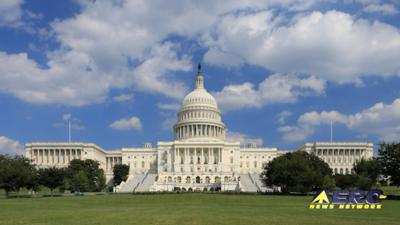Arithmetic’s Inescapable Veracity
The Federal Aviation Administration is awarding nearly $1-billion in monies deriving of the highly-controversial H.R. 3684 Infrastructure Investment and Jobs Act of 2022 to 99 U.S. airports in 47 states and two territories.

The funding “helps meet the growing demand for air travel and invests in key areas to help get travelers in and out of airports more quickly and improve the passenger experience by investing in new baggage systems, larger security checkpoints and improved ground transportation.” So states the Biden administration and democrat lawmakers who packed the legislation with less-publicized provisions that will see roads and bridges built in Canada, establish a national motor vehicle per-mile user tax pilot, and initiate attempts to mandate the installation of breathalyzers in all new roadgoing passenger vehicles.
Within the law’s demonstrably narrow focus on U.S. infrastructure, funds will also be allocated to increasing airport terminal sustainability and improving accessibility for individuals with disabilities. Furthermore, a number of grants contained within the law address the needs of aging air traffic control towers.
Transportation Secretary Pete Buttigieg prevaricated: “Americans deserve the best airports in the world, and with demand for air travel surging back, this funding to improve the passenger experience couldn’t come at a more urgent time. These grants will make it faster and easier to check your bags, get through security and find your gate, all while creating jobs and supporting local economies.”
Deputy FAA Administrator A. Bradley Mims added: “Today’s funding doesn’t just improve airport terminals. It creates opportunities in communities large and small for good-paying jobs and a chance to be part of our country’s thriving aviation sector.”
Funding for refurbishment of VFR control towers will be drawn from the Airport Terminal Program, one of three aviation initiatives created by the Bipartisan Infrastructure Law. Subject program provides grants in the amount of $1-billion annually for five-years—a disbursement which appears generous, superficially, but fails to address the stone-cold fact that of the law’s $1.2-trillion total, only $25-billion (1.9-percent) has been allocated to modernizing America’s crumbling airport infrastructure.

Notwithstanding provisions allocating $1.6-million for “equitable growth of shellfish aquaculture industry” in Rhode Island; $4.2-million for “sheep experiment station infrastructure improvements” in Idaho; and $3-million for a Mahatma Gandhi Museum in Houston, the Biden White House sets forth that the legislation it calls the President’s Bipartisan Infrastructure Law is an “historic investment in our nation’s infrastructure and competitiveness.” The White House goes on to assert the law will “rebuild America’s roads, bridges and rails, upgrade and expand public transit, modernize the nation’s ports and airports, improve safety, tackle the climate crisis, advance environmental justice and invest in communities that have too often been left behind.” Tapping into all that self-aggrandizement, the Biden administration further states the law will “drive the creation of good-paying union jobs and grow the economy
sustainably and equitably to help everyone get ahead for decades to come.”
Independent analyses of the President’s Bipartisan Infrastructure Law has reportedly shown that only 11-percent of the legislation’s monies are earmarked for revitalization or replacement of actual U.S. infrastructure. Rather, the law apportions over $13.6-billion to Ukraine aid and many billions more to climate-related priorities. Among the law’s most baffling features is a stipulation that inner-city neighborhoods receive an equal share of $7.5-billion in subsidies earmarked for electric vehicle charging stations.
 NTSB Prelim: Piper PA-23
NTSB Prelim: Piper PA-23 ANN FAQ: Submit a News Story!
ANN FAQ: Submit a News Story! Classic Aero-TV: One Mans Vietnam
Classic Aero-TV: One Mans Vietnam ANN's Daily Aero-Linx (07.03.25)
ANN's Daily Aero-Linx (07.03.25) ANN's Daily Aero-Term (07.03.25): High Speed Taxiway
ANN's Daily Aero-Term (07.03.25): High Speed Taxiway




